Celebrating 100 Years of A Sewage Plant
Jones Island is a national landmark. Officials gather to mark its importance.
It was unquestionably a first for Milwaukee, and possibly anywhere else.
Officials gathered along Milwaukee’s inner harbor Wednesday to celebrate the 100th anniversary of the region’s water treatment plant. There were even free toilet paper rolls.
And while the Jones Island Water Reclamation Facility, 700 E. Jones St., was the star of the event, the focus was on how the plant and its owner, the Milwaukee Metropolitan Sewerage District (MMSD), have helped clean up the rest of the region’s waterways.
“We’re not doctors or surgeons, but our work cleaning wastewater plays a crucial role in saving lives by removing harmful pathogens, disease-causing organisms and pollution from water,” said MMSD Executive Director Kevin Shafer. “Wastewater treatment protects lakes, rivers, fish and wildlife, and ensures safe water for drinking, swimming and growing food.”
Beyond cleaning water, the plant is also a fertilizer factory. Starting in 1926, the microscopic organisms that help break down the sewage were first used to make Milorganite, a fertilizer.
And while those driving over the Hoan Bridge or smelling its operation when the winds shift, as they did during Wednesday’s event, might not think of the plant as a marvel, it’s long been recognized as one. It was designated a National Historic Civil Engineering Landmark in 1974 by the American Society of Civil Engineers. In 1979, it was added to the National Register of Historic Places.
MMSD reports that since 1994 it has treated more than one trillion gallons of waste and stormwater. It’s an amount equivalent to letting a shower run for 761,000 years.
The plant is also a symbol of regional collaboration. It serves the homes of more than one million residents spread across 29 municipalities.
“MMSD is an excellent example of governments working together across borders,” said MMSD board chair Jeff Stone. Relaying an anecdote from historian John Gurda, Stone said rain doesn’t care where political borders are when it falls. “I want to thank all of the partners that we work with for their support and for making MMSD what it is and keeping us move forward into the next century.”
Wauwatosa Mayor Dennis McBride, a MMSD board member, said the sewerage district and the plant were a testament to strong leaderhsip. “We owe a lot to the so-called Sewer Socialists who created our parks and our sewage systems,” he said. “They received that derisive nickname from political naysayers because they cared less about political ideology and much more about protecting the well-being of our residents. And I often tell my neighbors, there’s no Democratic way to pick up the garbage and no Republican way to plow the snow. Similarly, public health is not and must not be a political issue. We must always put politics aside and follow the science, and that’s what MMSD does.”
McBride said the 1982 plan that created MMSD in its current form and advanced the Deep Tunnel project has been a boon for all involved. “It took years for some suburbs to appreciate this,” said the mayor. “Its tunnels saved our historic village district and MMSD continues to be an essential partner in controlling floods and bringing game fish back to our waterways.”
Mayor Cavalier Johnson and Milwaukee County Parks Director Guy Smith both presented proclamations to Shafer and the district.
Milwaukee Riverkeeper Executive Director Jennifer Bolger Breceda and Milwaukee Kayak Company owner and operator Beth Handle also praised the sewerage district.
Bolger Breceda praised MMSD’s leadership role in the collaborative effort to remove the federal “area of concern” designation from Milwaukee’s waterways.
“All that sludge and waste from being the ‘machine shop of the world’ is still at the bottom of the river, and we are working together collaboratively at a record pace to clean it up,” she said.
The several hundred million dollar effort involves a substantial amount of dredging and remediation. A containment facility, the Dredged Material Management Facility, is currently being constructed near the reclamation plant to store the material.
Handle said intergenerational groups now kayak the waterways, something she said was unthinkable several years ago because of contamination.
The press conference, held at Harbor View Plaza across from the treatment plant, will soon anchor another previously unthinkable amenity. A 4,300-foot-long riverwalk extension is being constructed along the inner harbor and is the largest one-time extension of the city’s riverwalk system.
“For 100 years, 24 hours a day, seven days a week, that treatment plant has been cleaning out wastewater and making this a better place to live,” concluded Shafer.
Veolia North America currently operates the Jones Island plant on a contract worth almost $60 million annually. A public bidding process, which could draw three or more bidders, is expected to occur next year. Several Veolia representatives, including newly-hired vice president Ghassan Korban, the former Milwaukee Department of Public Works Commissioner and New Orleans sewage district manager, and division CEO Joe Tackett, could be spotted in the crowd at the well-attended event.
Photos

Existing members must be signed in to see the interactive map. Sign in.
If you think stories like this are important, become a member of Urban Milwaukee and help support real, independent journalism. Plus you get some cool added benefits.


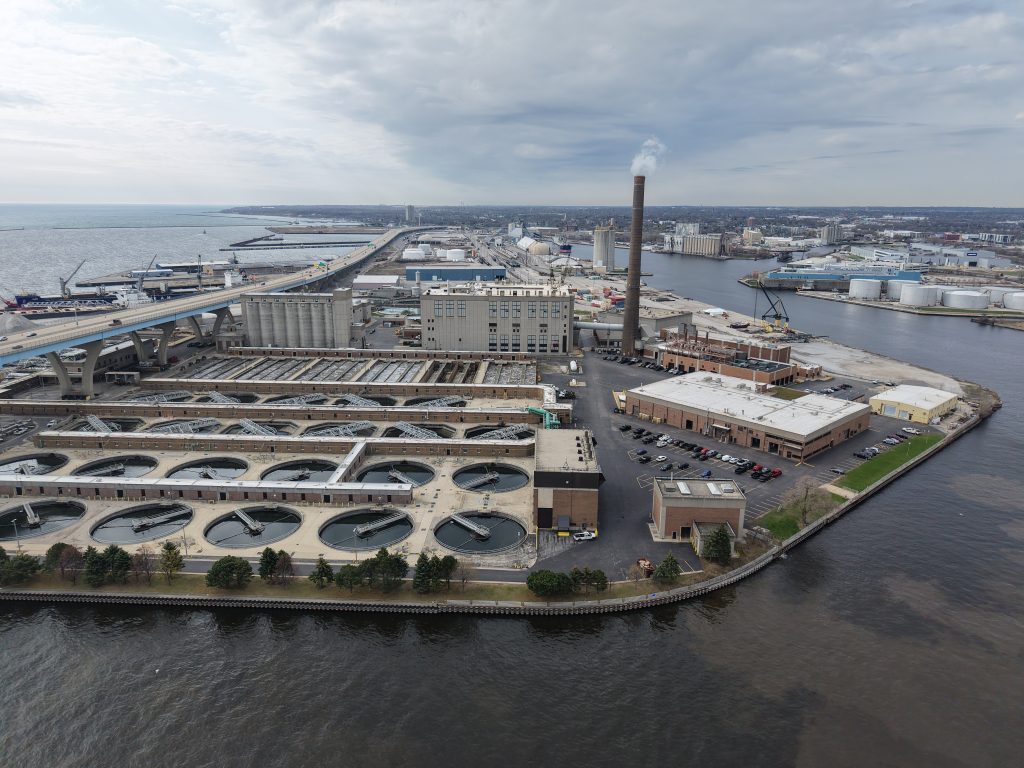
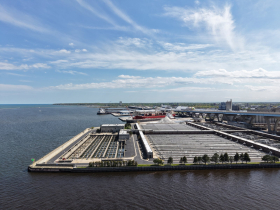
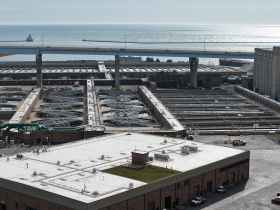
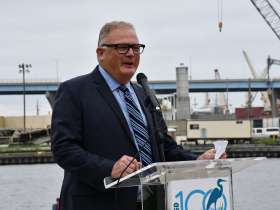
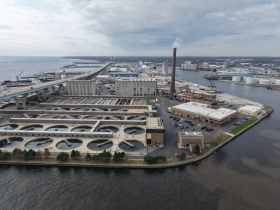
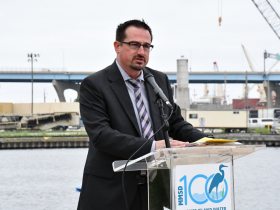
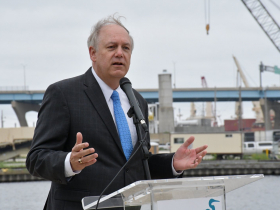




















Thanks for this.
The fact that we don’t often hear about this is a testament to how well it works!